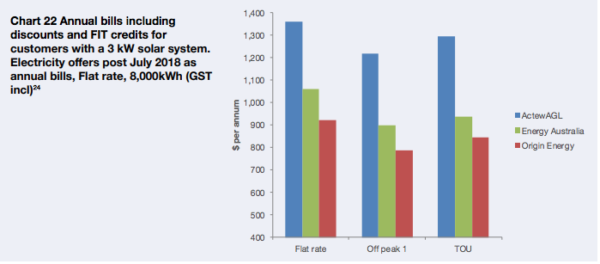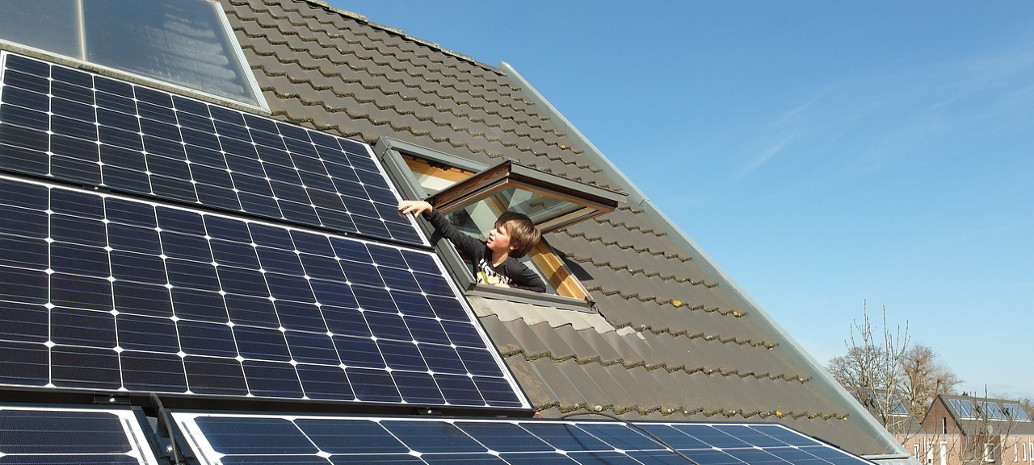Switching energy retailer offers could be one way to reducing electricity bills in the Australian Capital Territory. Another way to hedge against the rising prices is to turn to solar.
Since July 2017, households’ annual electricity costs have typically increased by $275 to $330, or 14-16%, shows a study from St Vincent de Paul Society and Alviss Consulting.
The average market offer bill (inclusive of discounts) amounted to $2,153 for households using 8,000 kWh and that is $216, or 11%, more than last year.
Meanwhile, the average annual bill stood at around $1,110 for households with 3 kW systems, which is around a half of the amount paid by household without solar installations.
Households with installed 1.5 kW solar PV systems ended up with the bill of $1,465, shows the report.
For this financial year, the electricity providers in the ACT – ActewAGL, Energy Australia and Origin Energy – received a green light from the Independent Competition and Regulatory Commission (ICRC) to increase prices by up to 14.29%. This has reflected on all energy users in the state.
For the owners of 3 kW solar PV systems, the average market bills increased by $57 or 5%, which is still far less than $216, or 11%, increase for non-solar homes.

Currently, ActewAGL, Energy Australia and Origin Energy offer FIT rates of 8, 12.5 and 17 cents per kWh. This means that a household with a 3 kW solar system installed will receive approximately $240 per annum in FiT credits from ActewAGL, $370 from Energy Australia, and $505 from Origin Energy.
The ACT’s biggest electricity provider ActewAGL, which has approximately 92% of the market share in the ACT small customer market, has passed the full price rise allowed by the ICRC to the customers, but also introduced a 25% discount offer for customers who sign up online, receive bills via e-mails and make payments by direct debit.
Meanwhile, on the federal level, Origin Energy seems not to be so favorable of the solar tariffs. It has warned that the last year’s electricity price spike was driven by generous state-based subsidy schemes for rooftop solar, along with high reliability standards imposed on networks, green costs and short notice for the closure of Northern and Hazelwood coal generators.
Origin Energy Chief Executive Frank Calabria was quoted saying “sleeper“ solar tariffs now probably account for up to 15% of a household’s bill.
He used the chance of addressing the media to issue a strong call to the state governments to give a nod to the National Energy Guarantee (NEG) next week, describing it as the optimal way to grow investment, deliver emissions and ensure reliability.
But, back in the ACT, Minister for Climate Change Shane Rattenbury certainly views the proposed energy policy from a different viewpoint.
As one of the leading opponents among the representatives of the Labor governments, Rattenbury has voiced his concern over the low ambition of the target, which cuts emissions only by two percent over 10 years, and remains locked in for a decade.
He warned earlier that the NEG could bring considerable disadvantages, and even penalize the state’s efforts to deliver 100% renewable energy by 2020 – the target the ACT seeks to achieve with the help of set up its wind farms in South Australia, Victoria and northern New South Wales.
Overall, signing up to the NEG has been surrounded by uncertainty as the ACT, Victoria and Queensland stated they are not willing to okay a policy that will undermine their local renewable energy agendas.
This content is protected by copyright and may not be reused. If you want to cooperate with us and would like to reuse some of our content, please contact: editors@pv-magazine.com.









By submitting this form you agree to pv magazine using your data for the purposes of publishing your comment.
Your personal data will only be disclosed or otherwise transmitted to third parties for the purposes of spam filtering or if this is necessary for technical maintenance of the website. Any other transfer to third parties will not take place unless this is justified on the basis of applicable data protection regulations or if pv magazine is legally obliged to do so.
You may revoke this consent at any time with effect for the future, in which case your personal data will be deleted immediately. Otherwise, your data will be deleted if pv magazine has processed your request or the purpose of data storage is fulfilled.
Further information on data privacy can be found in our Data Protection Policy.